Hello old and new readers! Welcome to Little Soybean. I’m back after a brief hiatus and will be continuing to write these dispatches, though more likely publishing one every few weeks rather than weekly for my mental sanity.
SOME EXCITING NEWS: The Vegan Chinese Kitchen now has a French edition, released last week (Oct 15) with La Plage. It feels surreal to see my cookbook translated into another language. You can find it online, or in bookstores in France. (As always, the English edition is available here.)
Every time I find myself on Ping Deng road, I stop to buy a mung bean cake. Li Zhao Ji (丽诏记) is a hole-in-the-wall bakery that specializes in vegan (chun su 纯素) pastries. The storefront is on a quiet street near the north gate of Dali’s old town, shaded from the high sun with a heartstopping view of the mountains.
My friend introduced me to the bakery when I first visited last December, insisting that their mung bean cakes were the best she'd ever had. She isn’t vegan, but she prefers these to the traditional ones made with lard (they’re too rich! a mouthful of lard! she says). We went to the bakery and ended up eating a few apiece. They just felt wholesome; something about the protein-rich mung beans and how homemade they tasted. After I ended up moving to Dali, I realized I could get one whenever I wanted. Each one costs 3 - 3.5 RMB, about 40 to 50 cents.
In the morning the cakes are still warm. I stand in the alley, pull the puck out of its little bag, and eat it on the street in three or four perfect bites. The pastry is soft and flaky and the sweet filling is solid and sandy, so fine-textured that it melts on the tongue. I don’t have a sweet tooth and the jiao yan flavor is my favorite flavor, fragrant with Sichuan pepper and savory.
The other five variations are yuan wei (original), hei zhi ma (black sesame), shan zha (hawthorne), suan mei (ume plum), or xian meigui (fresh rose petal jam). The filling is still mung bean paste, with a hint of something interesting tucked in the center.
The shop is vegan and family-run. They have been making mung bean cakes for three generations. This storefront, open in 2019, quickly gained a base of loyal customers, and it’s entirely because of the pastries. The girls are usually in the back room resting or forming the cakes by hand. They approach the window with expressions caught between interruption or indifference; they do not cater to tourists or offer samples. They have no social media, no store page, no filmed content or WeChat mini-program. They don’t offer shipping. The business is open six days a week, they take a break on Mondays.
In this touristy part of the old town overrun with specialty shops, where you’ll find seven identical stalls selling mass-produced ‘Yunnan pastries’ on the same street, all advertised as handmade, where hawkers accost you with trays of samples, the simple product and laconic indifference at Li Zhao Ji is refreshing. People go back. Locals disclose the location like a secret. They have a lot of vegan and vegetarian customers— even monks from the nearby temples are regulars. The shop doesn’t need any advertising, their popular flavors sell out by noon.
Mung beans are a staple of Chinese sweets. The tiny yellow beans are boiled or steamed and mashed into a smooth paste, enriched with lard and sweetened with sugar, then rolled into balls or logs and pressed into intricate molds, called lu dou gao (绿豆糕). The texture of these mung bean cakes can range from rich and waxy to almost powdery, and they are often layered with red bean paste, date paste, peanut or sesame, or with hints of lemon or osmanthus. I’ve seen these all over China— they are ubiquitous in tourist areas in large cities and the regional differences are slight.

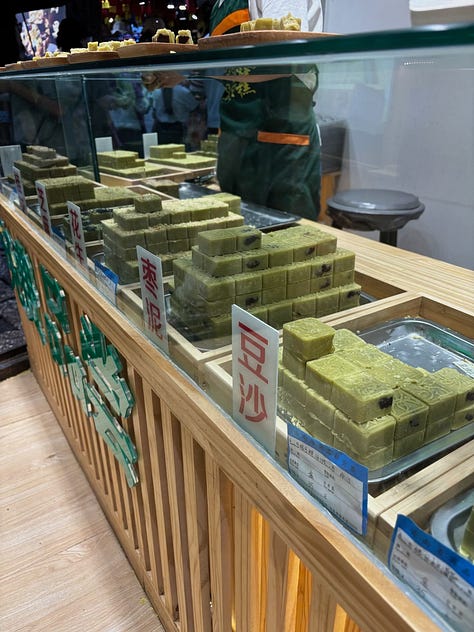
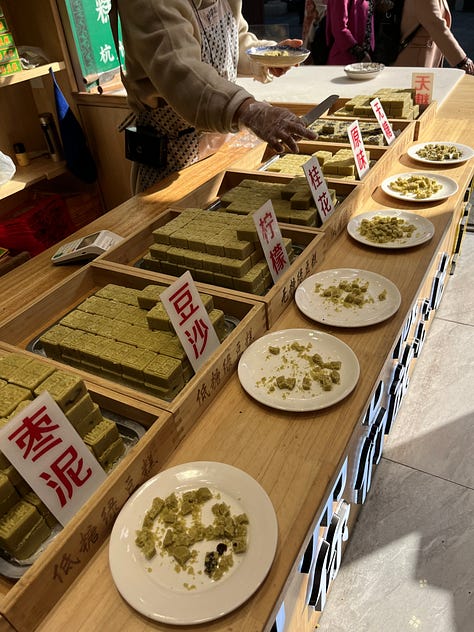
When you wrap balls of the filling in pastry dough and press them into pucks, they resemble round mooncakes. You can bake them in an oven or cook them in a hot griddle, where they turn flaky and crumbly. These are called lu dou xian bing (绿豆馅饼).
Because Li Zhao Ji doesn’t use preservatives, their cakes are best the same day, and get progressively drier as they sit around. In May, I bought two boxes before I left for the States. Fifteen hours later, after getting picked up at LAX, I asked my mom if she wanted a snack. I opened the box in my lap; the cakes were broken at the edges but still holding their shape. She ate one in a few bites and was silent for a moment. Then she extended her hand from the steering wheel. “Give me another one," she said.
When I visited Harbin this summer, I brought a box for my uncle and aunt. I was smarter this time and froze them before I left. We reheated them over the week and ate them for breakfast with hot soy milk.
Hours: 09:00am-sold out
Price: 3-4 RMB per cake
No. 126, Pingdeng Road, Dali, Yunnan Province
15125056853
Mung Bean Cakes 绿豆馅饼 (lǜ dòu xiàn bǐng)
Yields 9 cakes
I recreated these at home.
The earthy green skins slip off easily after soaking, but I buy peeled mung beans to save time. Warning: the soaking water smells like an old man’s farts. Drain thoroughly. Once the beans are steamed, they have a fine, sandy texture and a flavor that's a little nutty and a little sweet, like a chestnut. The powdery starchiness reminds me of a good baked potato. You can sweeten the filling to your taste, and add more coconut oil if you want it to be richer. The exterior is a simple Chinese pastry dough, composed of a water dough and an oil paste, rolled together to make flaky layers.
For the Filling:
120g shelled mung beans
25g coconut oil (about 2 tablespoons)
60g sugar (about ¼ cup)
For the Dough:
Water dough
100g all-purpose or cake flour (about 3/4 cup)
53g water (about 1/4 cup)
12g sugar (about 1 tablespoon)
20g melted coconut oil or neutral-tasting oil (about 1 1/2 tablespoons)
Oil paste
41g all-purpose or cake flour (about ⅓ cup)
23g melted coconut oil or neutral-tasting oil (about 1 3/4 tablespoons)
Make the filling: Soak the shelled mung beans for at least 8 hours or overnight. Drain and rinse thoroughly to remove any raw bean odors. Line a steamer basket with cheesecloth and steam the beans for 1 hour until soft and mashable between your fingers (or cook in a pressure cooker for 25 minutes). Transfer the cooked mung beans to a food processor with ¼ cup (60ml) of water and blend until smooth, occasionally scraping down the sides. Place the bean paste in a non-stick pan. Add the sugar and coconut oil, and cook over medium-low heat, stirring constantly, until the water evaporates and the paste becomes thick and cohesive—about 10 minutes. Divide the mixture into 30g balls and refrigerate while preparing the dough.
Make the water dough: In a large bowl, combine the flour, water, sugar, and oil. Stir with a spatula until a dough forms, then knead lightly into a slightly sticky ball. Cover and let rest for 20 minutes, then knead again until smooth.
Make the oil paste: Mix the flour and oil in a small bowl to form a smooth paste.
Method 1: Portion the water dough into individual 20g balls and the oil paste in 7g balls, and enclose each in individual balls (see photos below). You should have nine portions. Using a rolling pin, flatten each ball into a ‘tongue’. Roll it up, then turn it vertically again and flatten it into another tongue— this will form as many layers as possible (see photos below). Roll it one last time, then press it into a round disc.
Method 2: Roll the water dough as thin as possible into a large rectangle, about 18 inches (45 cm) wide. Spread the oil paste evenly over the surface using your fingers or a spoon. Roll the dough tightly, like a cinnamon roll, and slice it into 9 equal pieces, about 27g each. Pinch the open ends of each piece to seal in the oil paste. Repeat for all dough portions.
Assemble the cakes: Take one portion of the layered dough and roll it into a thin disc. Place a ball of mung bean filling in the center and pull up the edges to enclose the filling, ensuring it’s completely sealed. Place the seam side down and gently press it into a disc. Optionally, press some sesame seeds on top. Repeat with the remaining dough and filling.
Bake the cakes: Preheat the oven to 170°C (340°F). Arrange the cakes on a parchment-lined baking sheet, leaving about 1 inch between them. Bake for 18 minutes, or until the bottoms are golden. Flip the cakes and bake for another 18-20 minutes until both sides are golden brown. Let the cakes cool slightly before serving.

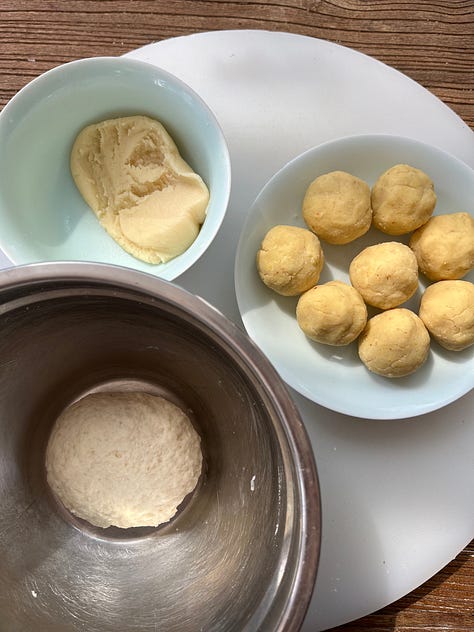
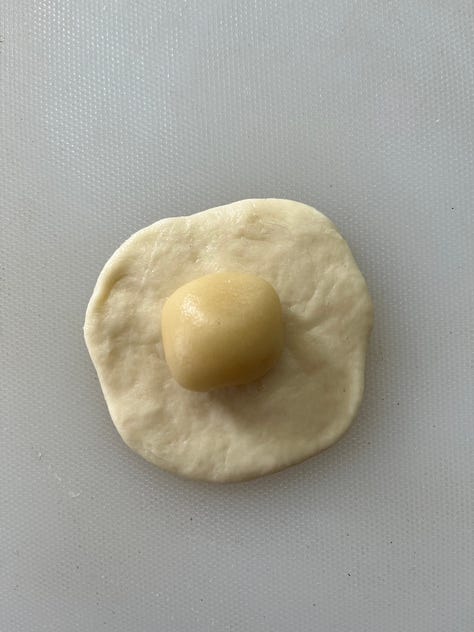

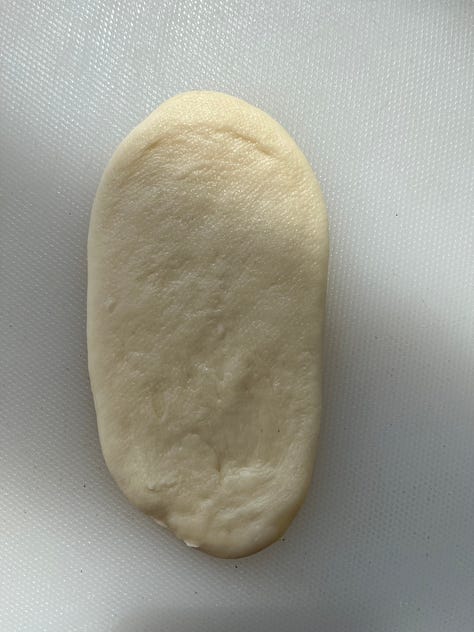
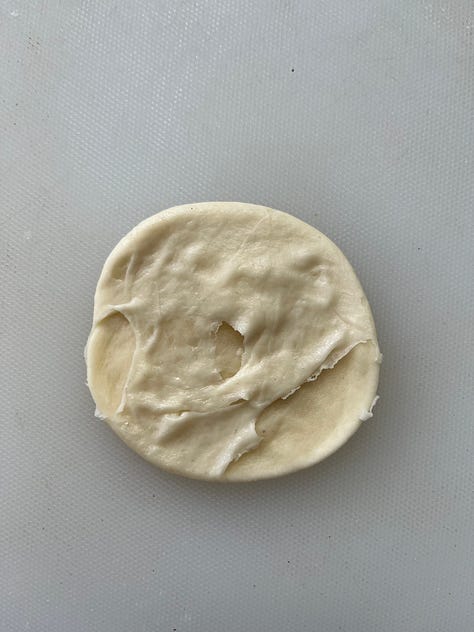


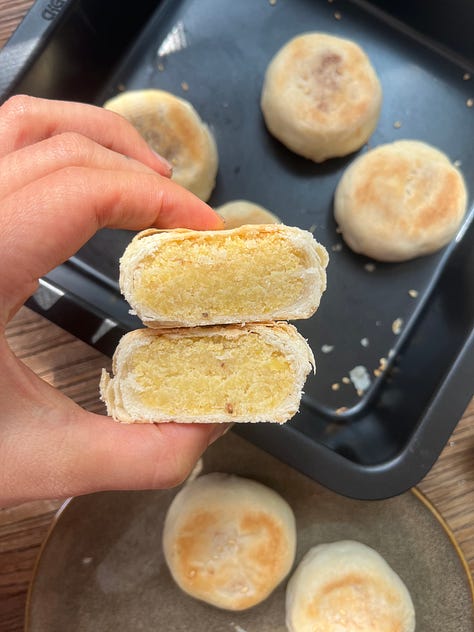


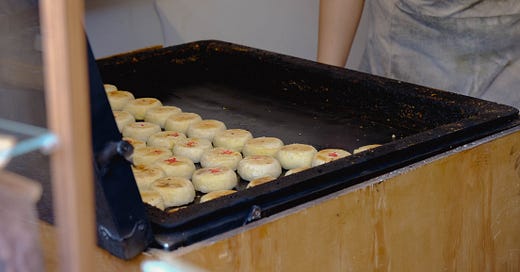




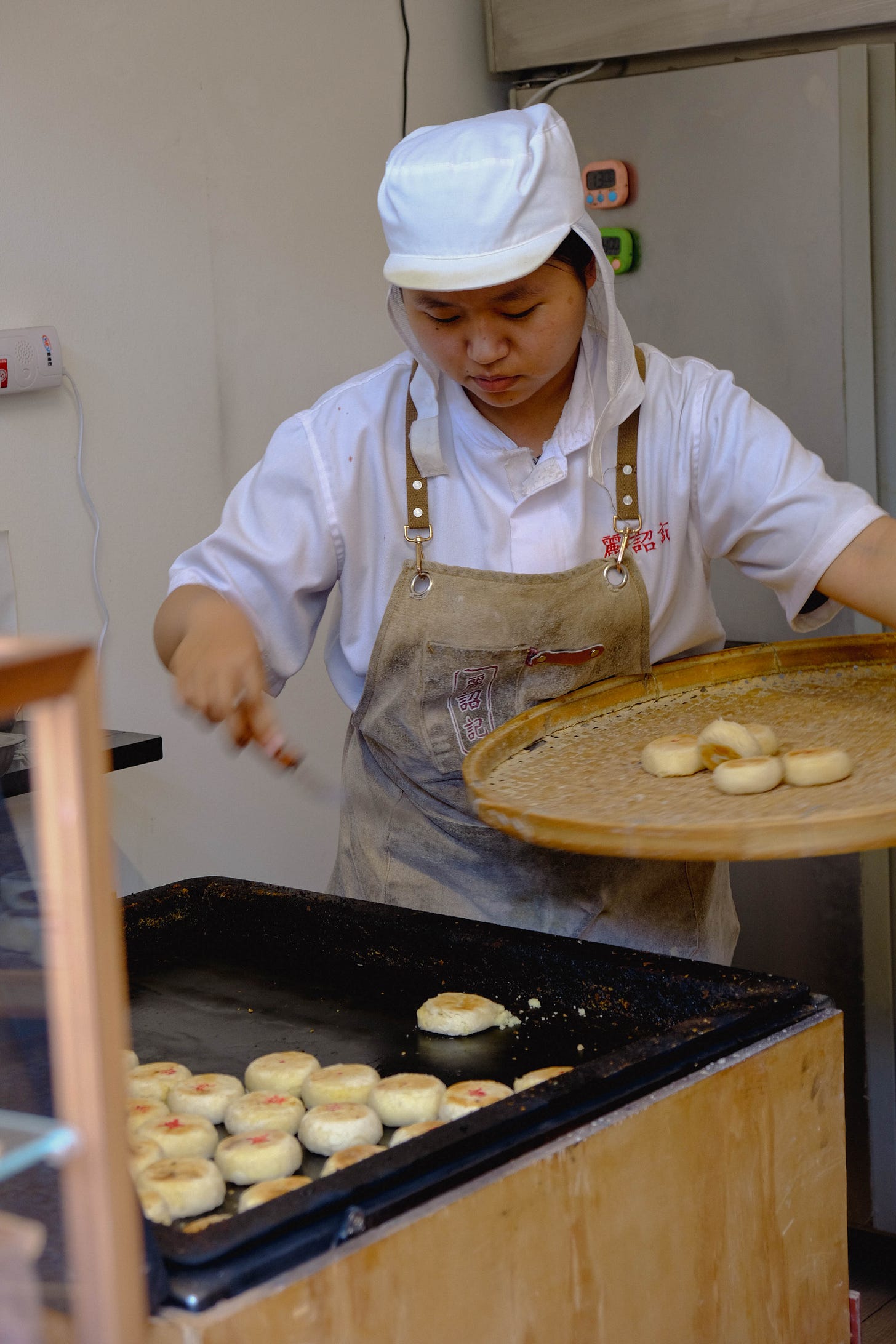
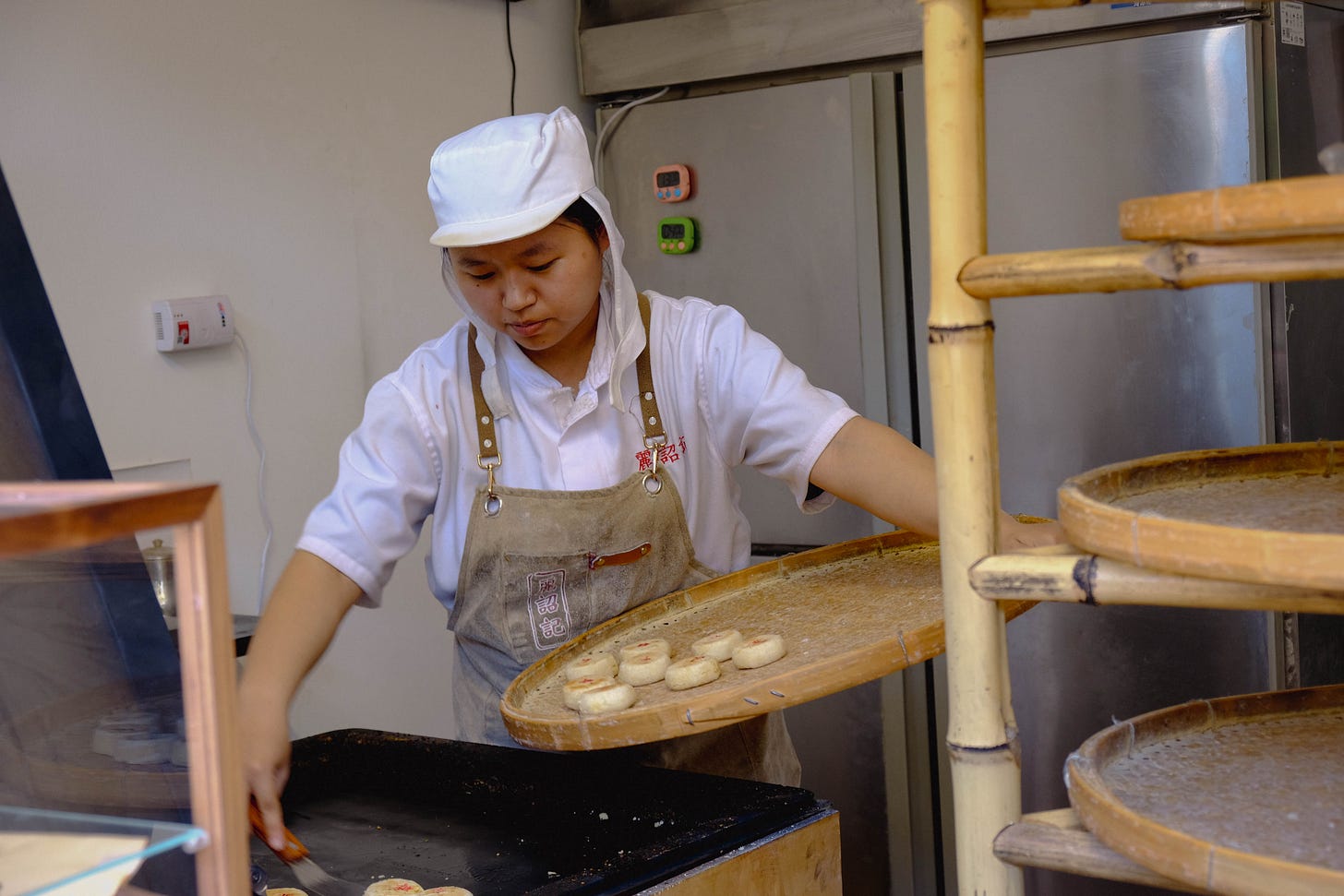
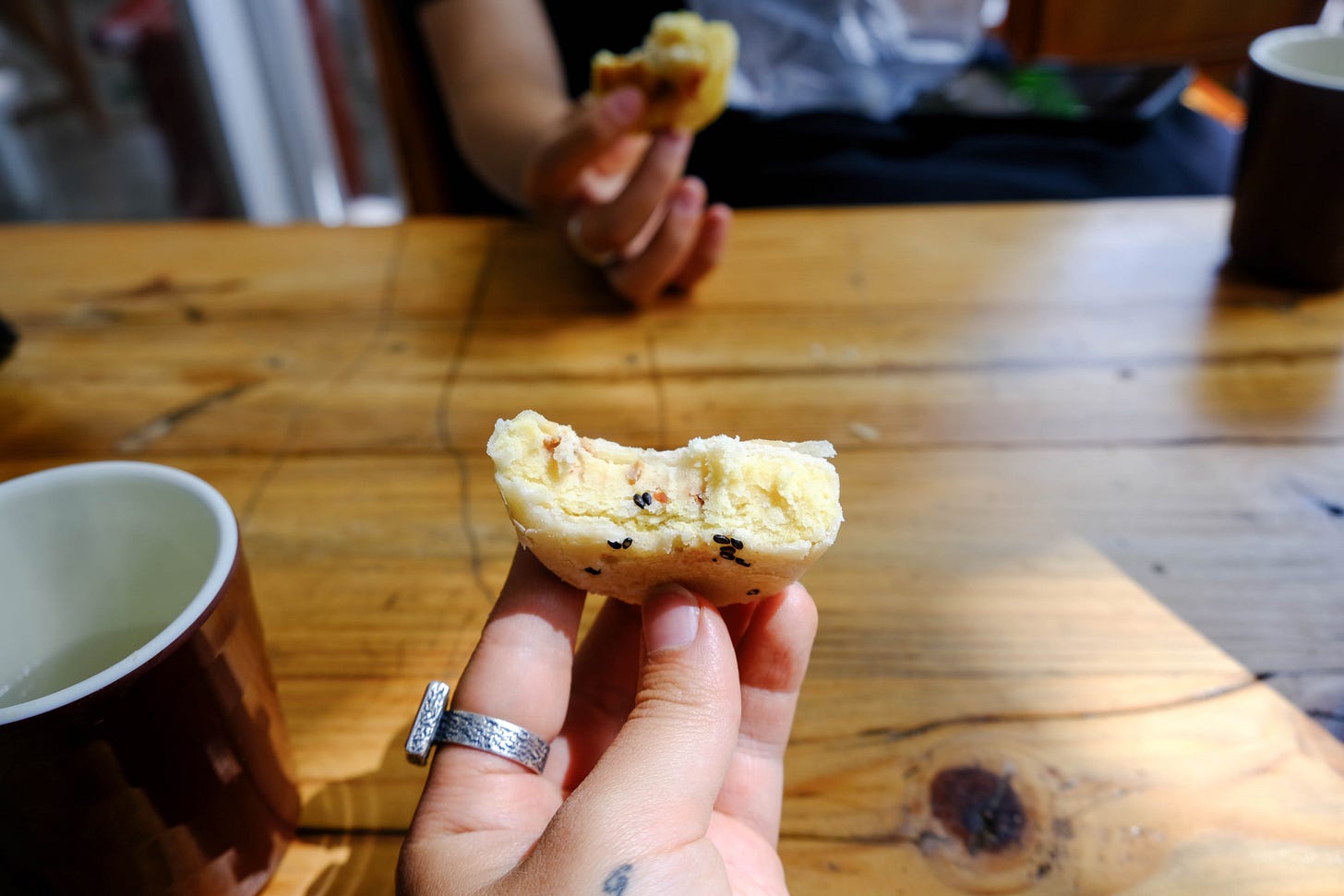





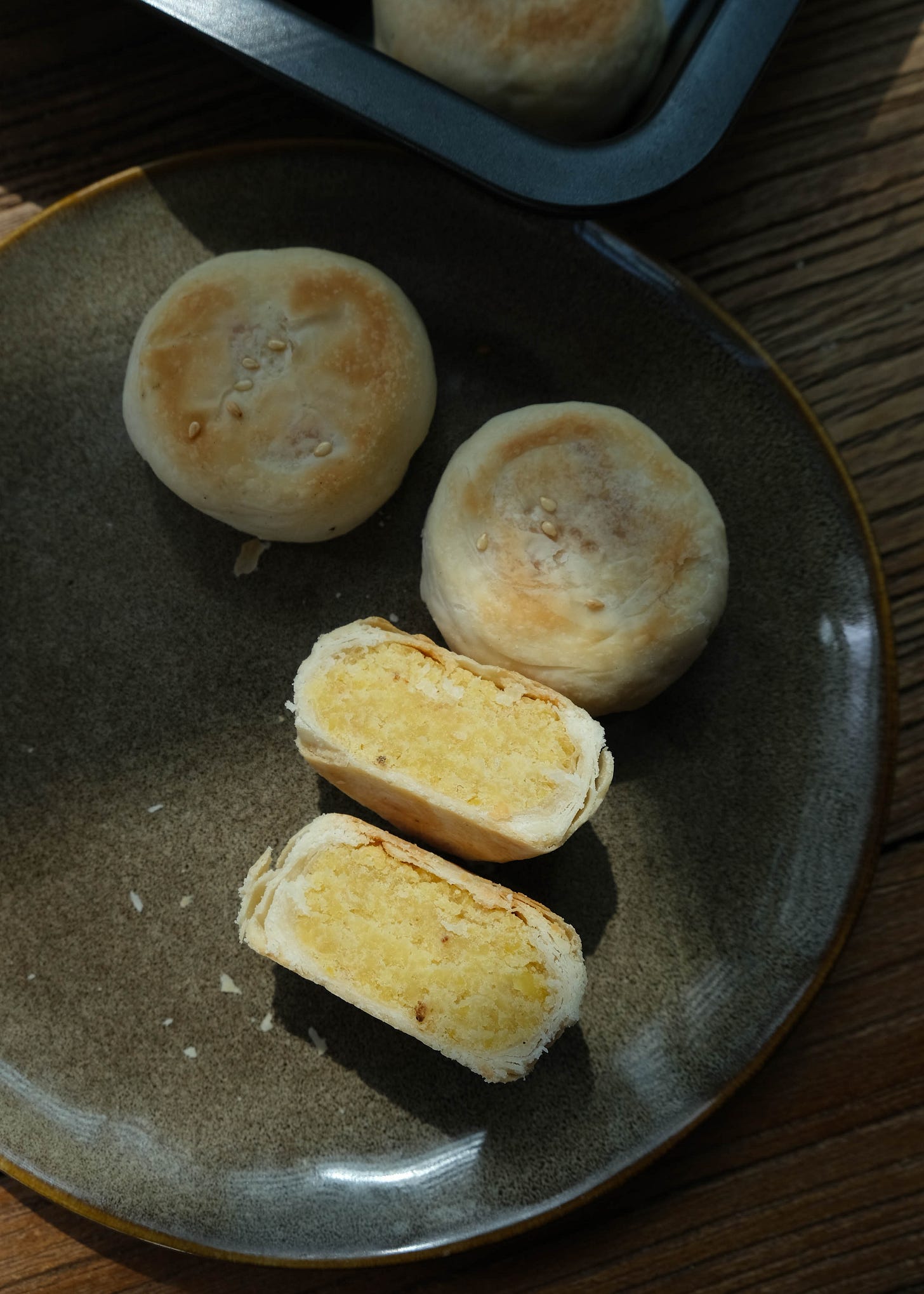
You are in heaven! Mung bean cake is my all time favorite. I'm going to try making them with your recipe!!
I wanna go to trip..